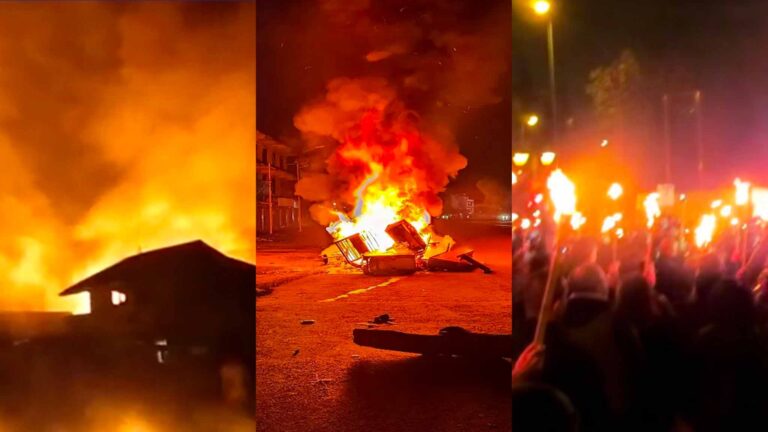
It is November and winter has started.
The people of Delhi NCR have started worrying about the air pollution… again. They should. Because AQI has crossed 400 mark for PM2.5. And, in some places, it has even touched 500 mark.
According to the AirNow website, Delhiites are exposed to hazardous levels – An emergency level condition where everyone in this zone is more likely to be affected.
Delhi has been consistently on the list of India’s most polluted cities for the last five years. Similarly, Delhi has been on the list of the top 10 most polluted cities in the world.
And this year, Delhi has become number one in the list.
What do you think the people of Delhi NCR are going through in terms of health?
Health Hazards of Air Pollution
The air of Delhi NCR has become so thick with pollution that it feels like you are breathing in poison.
It is not just an inconvenience, it is a threat to your health, your family, your community – every breath you take is laden with invisible toxins.
Sadly, this is the daily ordeal faced by millions in Delhi NCR. The air they breathe is gradually claiming their lives, silently and insidiously, like a slow-burning candle that diminishes our health and well-being.
Let’s take some scenarios to understand the depth of the crisis:
Scenario #1:
Take the story of Sameera, a bright-eyed 9-year-old girl. She should be out playing with friends or learning new things at school.
But she’s stuck indoors, struggling to breathe. Sameera has asthma, and the polluted air aggravates her condition. Her childhood is eclipsed by nebulizers and hospital visits, while her friends play on the streets she can’t go to.
Scenario #2:
Let’s picture about Mr. Sanjay Gupta, in his 50s, is diagnosed with severe respiratory issues due to prolonged exposure to this toxic air.
He feels constantly fatigued. His lungs are struggling. And, every breath feels like a battle for him.
What is worse is that his case isn’t an exception – it is becoming a norm.
It’s not just about Sameera or Sanjay. It’s the elderly couple next door who can’t go for their evening walks. It’s the daily wage workers whose productivity dwindles as their health deteriorates.
It is everyone who is choking on the air they are supposed to breathe freely.
Furthermore, the air pollution isn’t just affecting their respiratory systems. It is linked to heart problems, strokes, and can even impact the neurological development of children.
As the people of Delhi NCR are inhaling the worst air in the world, they are losing about 12 years of life!
Isn’t this a huge number? How would you feel when you know that 12 years of life has been deducted from your lifespan?
I find it heartbreaking.
Why is Air Pollution Happening?
You may be aware about the different reasons due to which the air in Delhi NCR so polluted. Reasons like:
- Vehicular emissions
- Industries pumping out toxic fumes
- Construction sites adding to the dust in the air
- Stubble burning in the neighboring states
- And, the waste to energy incinerators
Do you know how harmful incinerators are?
As per Hindustan Times, currently, Delhi has three waste-to-energy incinerator plants in Ghazipur, Narela and Okhla. The 4th one in Tehkhand is also going to be operational, maybe by the end of this year.
According to the IPCC, it has been found that incinerating 1 kg of waste produces 5,500 L of hazardous emissions.
So what do you think about 11,000 tons of daily waste generated by Delhi in 2022-23? Around 70% of this waste is burning and the rest is landfilled.
When these incinerators burn wastes, they release toxic and hazardous emissions including lead, mercury, dioxins and furans, particulate matter, carbon monoxide, nitrogen oxides, acidic gases (i.e., SOx, HCl), and metals.
Now you can imagine how much toxic and hazardous emissions are being produced in these incinerators.
You may have understood that when people of Delhi NCR inhale such a toxic air, what is happening to their physical and mental health.
Diseases like lung ailments, including asthma and chronic obstructive pulmonary disease (COPD), are on the rise.
Further, as stated by research mentioned on HHS.gov website, short- and long-term exposure to particulate pollution are both linked to an increased risk of heart attacks and other forms of heart disease.
According to a study, air pollution caused an estimated 54,000 premature deaths in Delhi in 2020.
This number is likely to have increased in the last year because air pollution consistently rises each passing year.
In Delhi, incinerators not only pollute air but also directly threaten the livelihoods of over 3 lakh working in the recovery and processing of recyclables. As recyclables are diverting to the incinerators, it has led to a loss of income for the informal waste sector and has caused huge air pollution in Delhi.
Government is losing on important resources and manpower. And, the burden on health industries is increasing as we are passing each year.
Taking Action: We Can Make a Difference
The sad truth is that while we are living our lives, the environment is suffering, and so are we.
The air we pollute today becomes the toxic air we breathe tomorrow. It’s a vicious cycle, and we’re all a part of it, whether knowingly or unknowingly.
Don’t just wait for the government or environmentalists to solve this problem for you. We can’t just sit back and assume that the air pollution will be resolved itself with time.
It is our problem. Our health is at stake. Our loved ones’ health is at stake. Our future is at stake. It is our responsibility.
We can take small actions as an individual. Here are some ways we can help in reducing air pollution:
- Use Public Transportation or Carpooling — If it is possible for you, use public transportation. See if you can carpool with your colleagues or anybody else. You may also use rideshare apps to share rides with others to your destination. By doing this, you are contributing to reducing the number of vehicles on the road. Fewer vehicles mean less traffic-related emissions.
- Maintain Your Vehicles — Make Sure you maintain your cars and bikes. Don’t skip regular service of your vehicles. When your vehicles are in good condition, they emit less pollution.
- Choose Green Transportation — Whenever possible, consider walking or cycling. If you going to buy a car, buy an electric one if possible. Don’t buy polluting ones like diesel cars.
- Embrace Three Rs: Reduce, Reuse, Recycle — You can minimize waste by recycling paper, plastic, and glass. When you are choosing products, go for minimal packaging. If possible, carry your own reusable bags made of cotton or jute while grocery shopping.
- Be Mindful About Your Household Choices — Don’t use toxic home cleaning products. Instead buy eco-friendly and non-toxic ones. Limit the use of aerosol sprays as much as you can. By doing so, you minimize the release of harmful chemicals into the air.
- Reduce Meat Consumption — Embrace the fact that animal farming and meat production contributes to air pollution. Because it requires a lot of resources and land to produce meat. You can consider switching to a plant-based diet to reduce air pollution.
- Support Green Spaces — Plant as many trees as you can in your community to make the air cleaner. Participate in local tree-planting initiatives or community gardening projects.
- Advocate and Educate — Raise awareness about air pollution and its implications for health and the environment. Support local and global policies and initiatives aimed at reducing pollution.
- Engage in Clean-Up Efforts — Volunteer and participate in local clean-up events to remove pollutants from your surroundings.
Remember, slight adjustments to our daily habits can collectively create a substantial impact. By incorporating these practices, we not only contribute to the battle against air pollution but also foster a healthier and more sustainable future for ourselves and future generations.
So, let’s collaborate in this environmental endeavor and work towards cleaner air, one positive action at a time.
→ Photo by Ravi Sharma
2024 © socialexperiencehub.com. All rights reserved.




